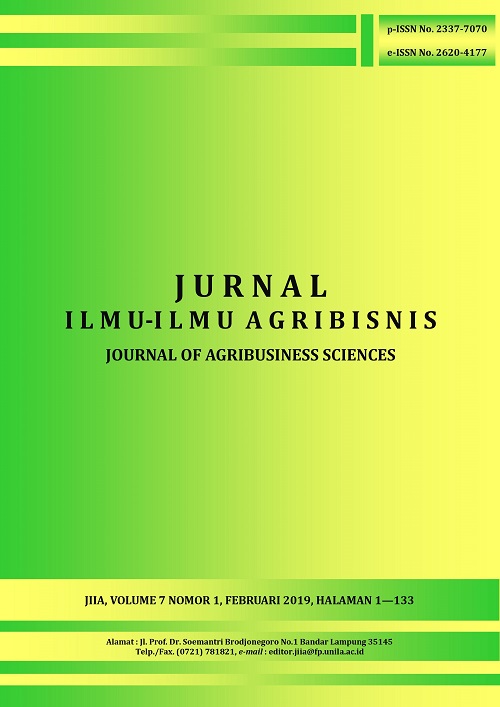SISTEM AGRIBISNIS USAHA TERNAK AYAM RAS PETELUR (STUDI KASUS CV MULAWARMAN FARM) DI KECAMATAN GADINGREJO KABUPATEN PRINGSEWU
DOI:
https://doi.org/10.23960/jiia.v7i1.3329 Abstract View: 1922
Abstract View: 1922
Abstract
The research aims to determine the supply of production facilities, financial feasibility, and marketing system. This research is a case study at CV Mulawarman Farm in Gadingrejo Subdistrict of Pringsewu Regency. The data was collected in April 2017 and analyzed by qualitative descriptive and finance feasibilities analysis. The result showed that the supply of production facilities at CV Mulawarman Farm did not fully met the expectation because the supply of nipple drinker still occurred delayed for the far distance. The development business at layer chickens farming of CV Mulawarman Farm was profitable enough up to population scaled of 75,000 heads (25 percent larger than the previous population). The egg marketing system of CV Mulawarman Farm distributed to the regular customers that located spreadly in Bandar Lampung, Pringsewu, Tanggamus, and Pesawaran in which the highest percentage of egg marketing distribution was in Bandar Lampung.
Key words: agribusiness system, financial feasibility, laying chicken
Downloads
Downloads
Published
How to Cite
Issue
Section
License
Authors who publish with this journal agree to the following terms:
Authors retain copyright and grant the journal right of first publication with the work simultaneously licensed under a Creative Commons Attribution License that allows others to share the work with an acknowledgement of the work's authorship and initial publication in this journal.
Authors are able to enter into separate, additional contractual arrangements for the non-exclusive distribution of the journal's published version of the work (e.g., post it to an institutional repository or publish it in a book), with an acknowledgement of its initial publication in this journal.
Authors are permitted and encouraged to post their work online (e.g., in institutional repositories or on their website) prior to and during the submission process, as it can lead to productive exchanges, as well as earlier and greater citation of published work (See The Effect of Open Access).














